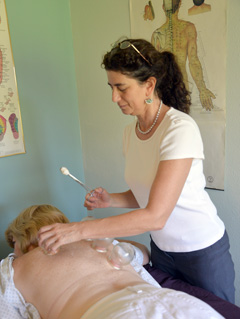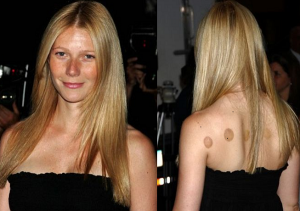Cupping
 Cupping, and the related technique Gua Sha, are for pain and tightness of major muscle groups (back, neck, thighs, legs, upper arms). These techniques provide very deep myofascial release. Fascia is a general term for the connective tissue of the body and when it is tight it causes mild to quite severe pain. Loosening the fascia under the skin and around the muscles allows muscle tissue, tendons, and even ligaments to finally relax. Not all pain can be treated effectively with cupping, but if it can, even difficult to manage pain can – seemingly miraculously – be whisked away.
Cupping, and the related technique Gua Sha, are for pain and tightness of major muscle groups (back, neck, thighs, legs, upper arms). These techniques provide very deep myofascial release. Fascia is a general term for the connective tissue of the body and when it is tight it causes mild to quite severe pain. Loosening the fascia under the skin and around the muscles allows muscle tissue, tendons, and even ligaments to finally relax. Not all pain can be treated effectively with cupping, but if it can, even difficult to manage pain can – seemingly miraculously – be whisked away.
Cupping is a method of applying mild or strong suction to the skin and Gua Sha is a technique of briskly rubbing the skin. The treatment is performed directly to the area of pain. Regardless of which method is used the end result is the same: the capillary bed feeding the area is temporarily enlarged. This allows built up cellular waste materials to be removed which relaxes musculature and fascia, and also nourishes and moisturizes the fascia to restore elasticity.
The process also causes the characteristic change in skin color – broad patches from Gua Sha and circles from cupping. These marks resemble bruises but fade back to normal skin color without the green, yellow and purple phases of a bruise. This is because neither cupping nor Gua Sha break capillaries; they simply enlarge them temporarily.

Gwyneth Paltrow with typical cupping marks.
Cupping was popularized within the last few years by several movie stars who took advantage of it for pain relief, but in truth, these techniques are thousands of years old. Cupping, particularly, was discovered and used by many different cultures, while Gua Sha is more uniquely Chinese.
